5 Signs Your Picnic Food Isn’t Safe to Eat, According to Experts

Foodborne illnesses are exceedingly common, affecting an estimated 48 million Americans every year. Some of these cases take a serious turn: According to the Centers for Disease Control (CDC), 128,000 of those individuals are hospitalized, and 3,000 die from foodborne diseases annually.
That’s why it’s so important to use safe food handling and storage practices, which can help prevent the spread of harmful disease—and why it’s crucial to take extra precautions under circumstances that raise your risk. Picnics, often held during summer months, are a common source of foodborne pathogens, due to improper storage and high outdoor temperatures.
To keep yourself safe this summer, there are a few red flags to keep in mind. Read on to learn the five signs that your picnic food isn’t safe to eat, and how to avoid a problem.
READ THIS NEXT: Lay’s Potato Chips Recalled Over Health Concerns, FDA Warns.
1
The food has a questionable odor.
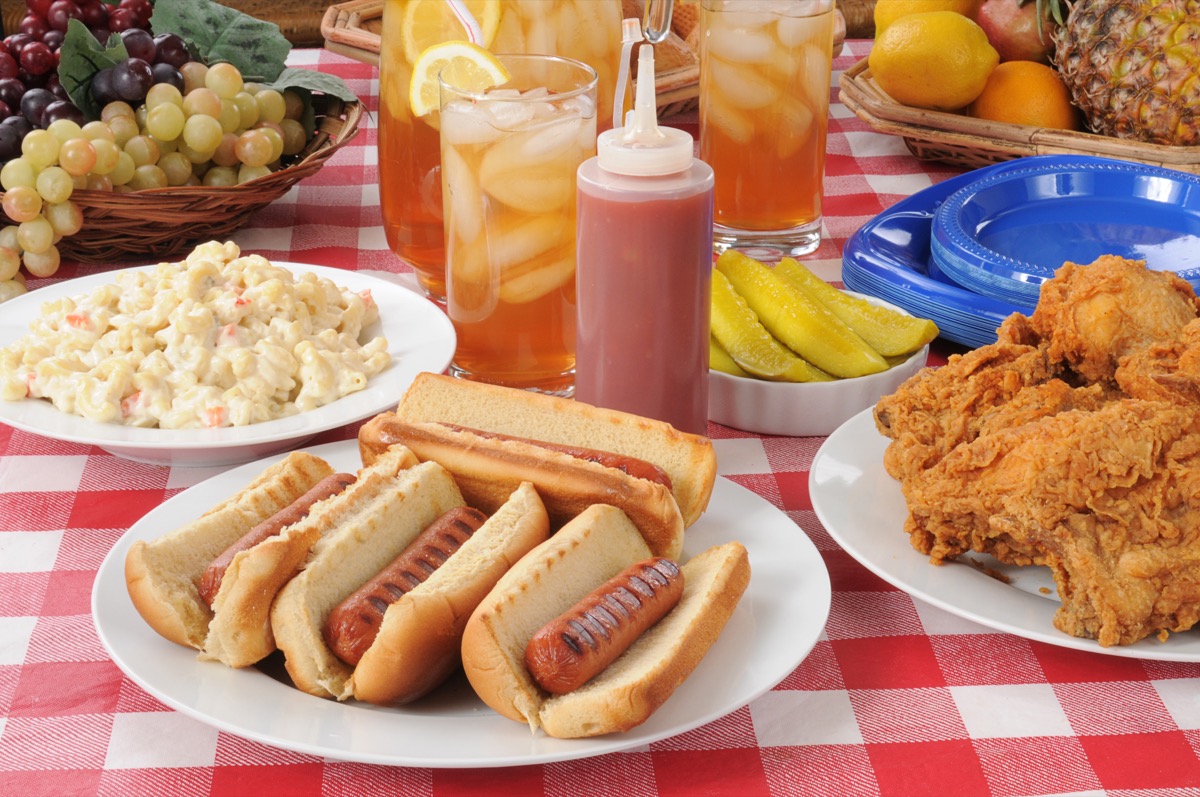
If any item in your picnic has a foul or questionable odor, this should be your first sign that your food may have spoiled, says Mo Janson, MD, general practitioner and medical content creator for Welzo.
“If the food has a strong, unpleasant odor, it could be a sign of spoilage or bacterial growth. Foul odors often result from the breakdown of proteins or the presence of harmful bacteria, indicating that the food is no longer safe for consumption,” he tells Best Life.
READ THIS NEXT: 2.5 Million Pounds of Meat Recalled Over Contamination Fears, USDA Warns.
2
You notice mold or discoloration.
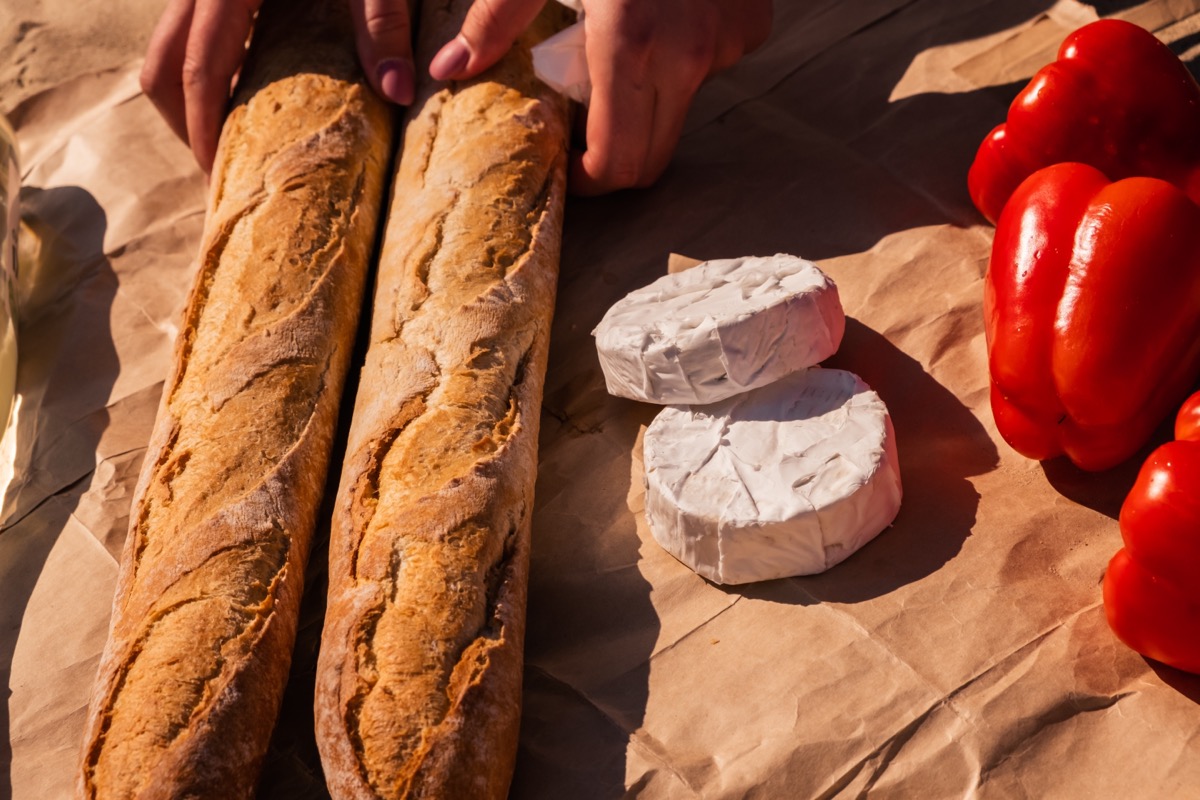
The presence of mold or discoloration is another clear sign that your picnic isn’t safe to eat. “Mold can produce toxins that are harmful if ingested, and discoloration often indicates the growth of bacteria. Avoid consuming food with visible mold or significant color changes,” says Janson.
The U.S. Department of Agriculture (USDA) notes that you shouldn’t try to simply cut off and eat around the visibly moldy parts of your food. “You only see part of the mold on the surface of food—gray fur on forgotten bologna, fuzzy green dots on bread, white dust on cheddar, coin-size velvety circles on fruits, and furry growth on the surface of jellies. When a food shows heavy mold growth, ‘root’ threads have invaded it deeply. In dangerous molds, poisonous substances are often contained in and around these threads. In some cases, toxins may have spread throughout the food,” USDA experts write.
3
There’s a change in your food’s flavor.
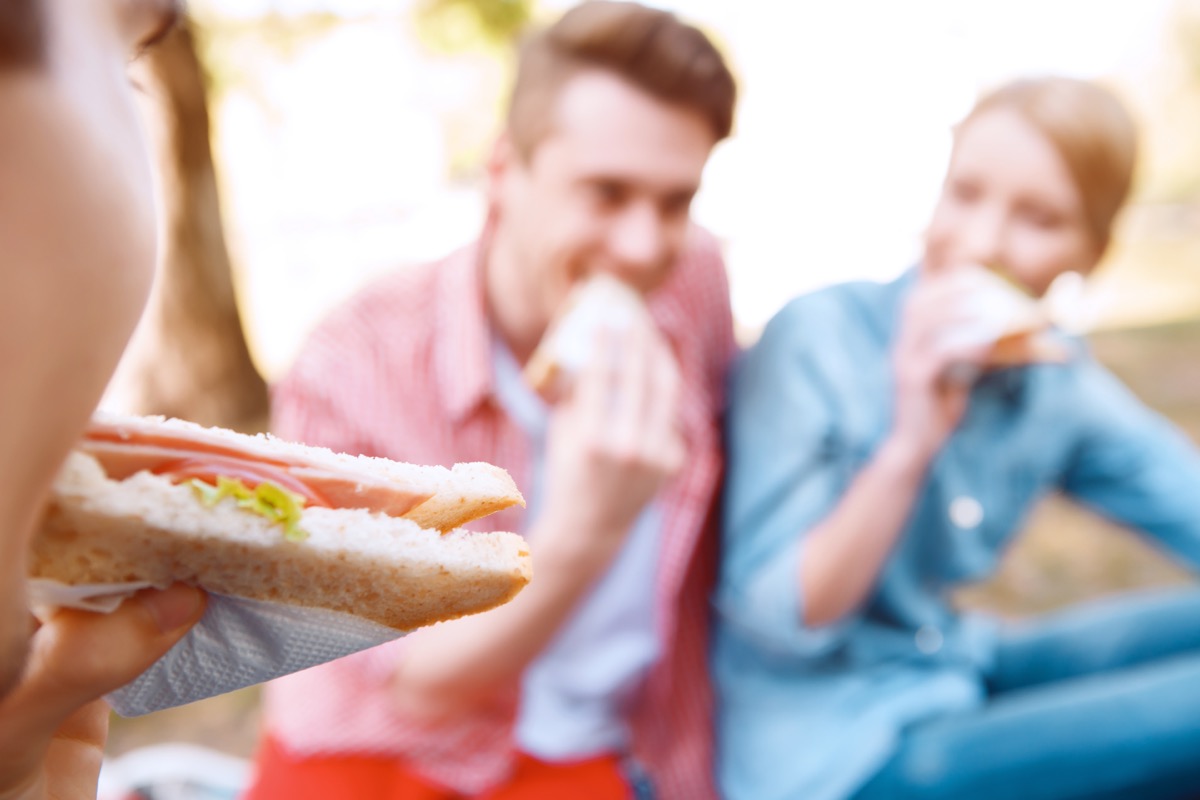
Another surefire sign that your picnic food isn’t safe to eat is that your first bite tastes suspicious. “If the food tastes or feels off, such as being excessively sour, bitter, or gritty, it could indicate spoilage,” says Janson. “If the food feels slimy or sticky, it suggests bacterial contamination. Bacteria can produce a slimy film, indicating that the food has started to deteriorate and may harbor harmful pathogens.”
However, most of the time, the germs that cause food poisoning are undetectable through taste, and the CDC warns against taste-testing food if you already suspect that it may be past its prime. “Tasting only a tiny amount can make you very sick,” the health authority writes.
For more health news sent directly to your inbox, sign up for our daily newsletter.
4
You notice a change in texture.
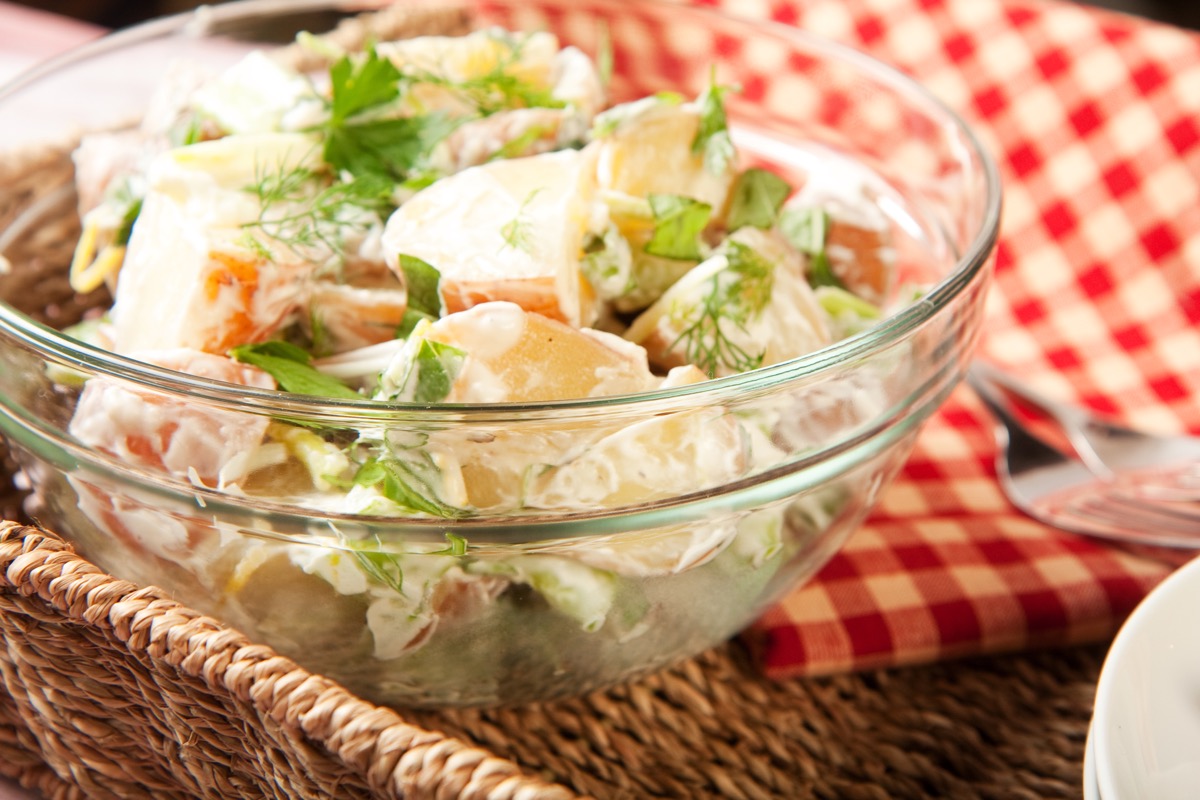
If you notice a change in your picnic food’s texture, that’s another sign that it’s destined for the trash bin. “Changes in taste or texture are often due to bacterial growth or chemical changes in the food, making it unpalatable and potentially unsafe,” he adds.
However, the CDC once again cautions against using this as a measuring tool for safety. Though you should definitely skip any food item with a suspicious texture, it doesn’t mean that foods which appear to have a normal texture are necessarily safe to eat. Often bacterial growth makes no noticeable impact on your food.
5
The food was improperly stored.
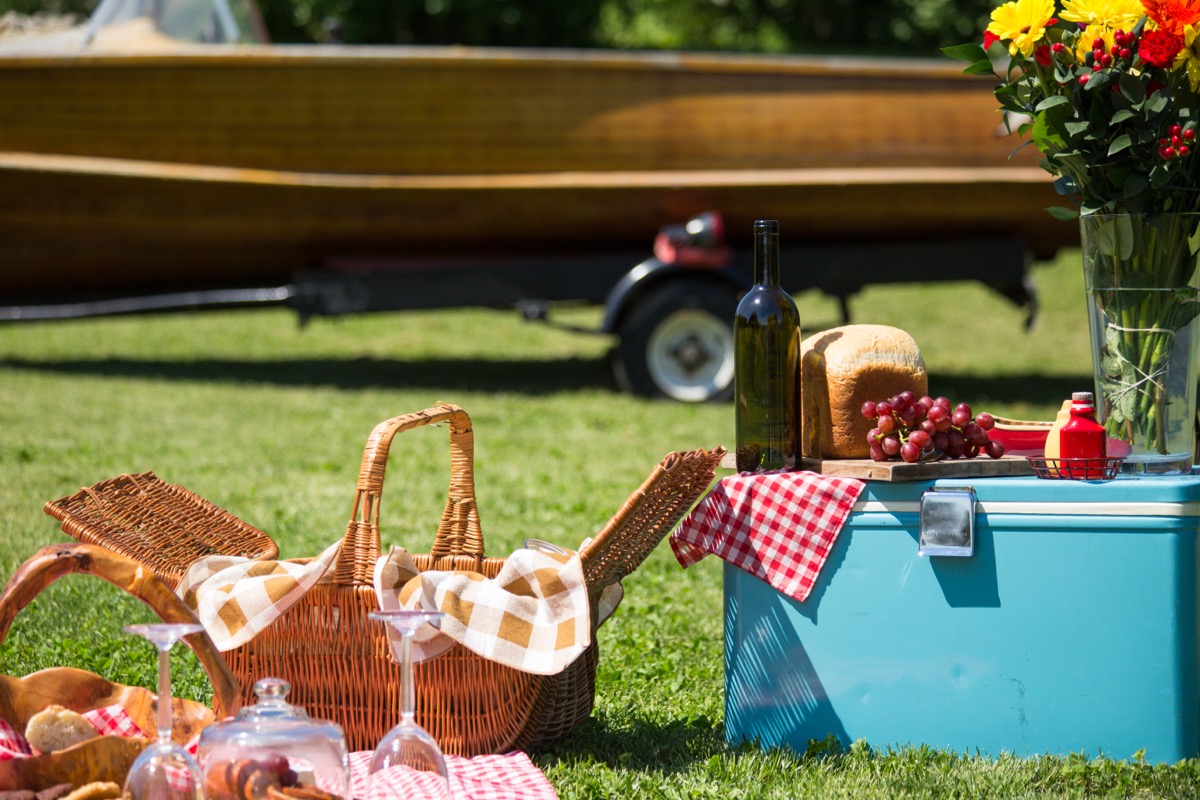
Because many forms of spoilage are so often undetectable through your food’s taste, texture, or smell, it’s important to take an objective look at the food safety facts of your picnic, says Sonali Ruder, MD, a board-certified ER doctor as well as a classically trained chef and cookbook author.
She says that most importantly, food should never be left in the temperature “danger zone”—between 40°F (4°C) and 140°F (60°C)—for more than two hours, and this time limit decreases to just one hour when the temperature outside is above 90 degrees. She adds that bacteria can double every 20 minutes, leading to the production of potentially dangerous toxins.
“To prevent bacterial growth and the risk of foodborne illnesses, you should always keep hot foods above 140°F (60°C) and cold foods below 40°F (4°C),” says Ruder, who is also known as The Foodie Physician. “If you’re serving food at a party or picnic, keep food hot in chafing dishes, slow cookers or warming trays. Keep cold food, like salads and deli meat, cold by nesting them in bowls of ice,” she suggests.
Ruder adds that if you’re not sure about the amount of time your food has been sitting out, you should use your best judgment and err on the side of caution. “When in doubt, throw it out!” she says.
Best Life offers the most up-to-date information from top experts, new research, and health agencies, but our content is not meant to be a substitute for professional guidance. When it comes to the medication you’re taking or any other health questions you have, always consult your healthcare provider directly.